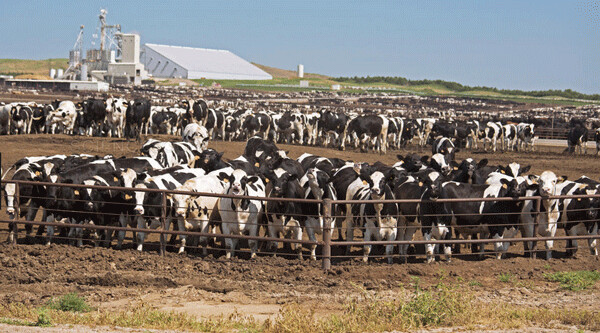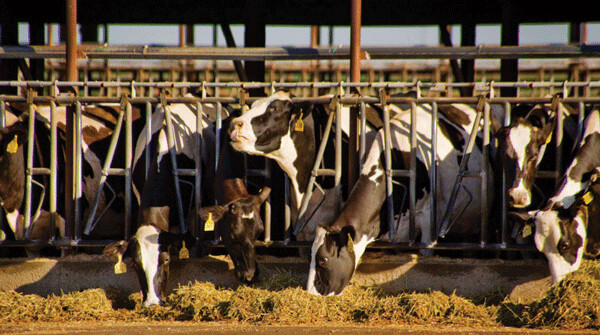The Epic Battle Between Milk And Water

I didn’t realize our neighbor state Wisconsin had over 15,000 lakes until I Googled. Well, it might depend on how you count them according to size and acreage. We know that Minnesota has about 10,000 but whether Wisconsin actually has more water in its lakes and rivers is an argument we don’t need right now. I do know that “water” has changed a great deal since I was a kid who went swimming in our farm ponds loaded with a foot of muck and thousands of leeches and diving in the nearby lakes and rivers without catching some mysterious rash, stomach disorder, or skin cancer. But times have changed. Fertilizer, pesticides, and factory farms have closed down many lakes, rivers, swimming holes and beaches.
Three recent news stories reminded me of how much climate and life has changed from the time about 60 years when I was stung by a jellyfish in Chesapeake Bay. It hurt. Last weekend over 5,000 Australian swimmers were stung by bluebottle jellyfish on the Queensland coast. Bluebottle jellyfish normally live in large groups in the middle of the deep ocean tailing their long tentacles that act like a huge sail. Evolution has created bluebottles with left-handed sails and right-handed sails so the winds can blow them in opposite directions. This keeps them from all dying on a beach if the winds blow hard in one direction. Well, the winds around Australia are blowing longer and harder than ever because of climate change, so many left-handed sailing bluebottles ended up on beaches where 22,282 Aussies have been bitten in the last five weeks. Thousands of swimmers have had to be treated by lifesavers and medical personnel, and some swimmers had to be treated for anaphylactic shock-a life-threatening episode. Authorities estimate that as many as 45,000 people were probably bitten during the period. So what does the bluebottle jellyfish have to do with the waters of Wisconsin and Minnesota? Well, we are also affected by the environment and climate change in our two states.
Death By Environment And Farming Practices
One might think that finding good drinking water in a state with 15,000 lakes and thousands of rivers and creeks would be easy. Not anymore. A Wisconsin farm mother is charging factory-farming and Wisconsin irrigation practices with killing her baby. An excess of nitrates in the water put there by factory-farm dairy operations, the spreading of tons of liquid manure over thousands of acres of potato and corn land, and irrigation practices probably killed her baby. The central region of Wisconsin is known for its sandy soil, hundreds of shallow, sandy-bottomed lakes, and hundreds of miles of trout streams. Well, this is how it used to be known. Now it is dominated by huge factory farms and irrigation systems that can pump thousands of gallons of water a minute out of aquifers. Irrigation pumps have turned Wisconsin into a very productive and profitable food and food processing state, resulting in $88 billion in sales. But big farmers now use 72% of the available water.
Because of the sandy soils, in some areas from 100 to 200 feet deep, the topsoil does not hold soil nutrients or water very long. The central region is like a big sandbox where sweet corn, carrots, peas, and potatoes are grown. The area has over 2,000 irrigation wells, about 20% of the wells in the state. In the middle of the area near Plainfield there are over 200 wells in a five-mile radius! Irrigation wells in the sandy area can pump more than 100,000 gallons of water per day. During a dry season trout streams and rivers completely disappear, shallow sandy lakes turn into wetlands, lake docks are left high and dry, thousands of fish are killed, state boat launches end up far from lake water, public beaches close, and the property values of lake cabins plummet. All of these environmental incidents began about 15 years ago.
And Then Comes The Deadly Nitrates
An excess of nitrates in the body has long been linked to what is now known as blue baby syndrome which restricts oxygen in an infant’s blood. Nitrates can also cause malformation of the brain and spinal cord. The Stewart family discovered at 22 weeks that their baby could not survive even if she carried her baby to term. Nitrates ranging from 15 to 40 parts per million were present in the water the family drank. That amount is three to four times the standard for safe drinking water.
The Stewarts lived near a factory-type dairy farm milking 6,000 cows that produced thousands of pounds of manure loaded with nitrates per day. The manure was then spread over 7,000 acres of sandy farm land which slowly saturated the area’s aquifers. Nitrates also come from private septic tanks and commercial fertilizers. All of the people living near the factory-farm tested for the level of nitrates had the same level as the Stewarts after the local health department and the U.S. Environmental Protection Agency were alerted. Mrs. Stewart was induced at 22 and1/2 weeks but the baby did not survive the birth. Over 80 residents of the area are suing Central Sands Dairy and the owners Wysocki Produce Farm, Inc. because of their contaminated wells.
The Armenia Growers Coalition, a local organization representing the 6,000-cow dairy and large farmers in the area, has offered to buy bottled water and install filtration systems in their homes, but Mrs. Stewart rejects that offer: “We should be able to go to our faucet and turn it on and safely drink water from our well and not worry about getting sick and dying.” In the Star Tribune article “Baby’s Death Sparks Water Safety Fight With The Ag Industry” which covers this important story for Midwest residents and farmers, the reporters ask a very crucial question of politicians, the EPA, and all local government: “In the part of the country where there’s always been more than enough water to go around for fishing, swimming, drinking and farming, how do you share it and protect it in the face of rising demand?” It’s a very difficult problem to solve, particularly if we go the factory-farm route to grow all of our food. I remember a few years ago when the city of Las Vegas had such a serious water shortage it was buying up resident and business grass lawns for a dollar a sq. ft. if the owners replaced them with desert sand.
A Few Thoughts From An Old Farm Boy
I spent my first 15 years on a 180-acre farm near Little Falls, and I have fond memories of that experience, even if we did not have electricity in the house and the two-holer was 63 feet from the back door. I’m against factory farming when we treat milk cows like carrots in the garden, pigs like peas in a pod, and chickens and turkeys like kernels on a cob of corn. We were rewarded by treating animals like animals. There’s a great picture from Switzerland of four cows going to the pasture for the first time in the spring. They are so happy they are prancing with all feet off the ground. We had about 20 cows, many with different attitudes. One short-horned rebel usually tried to chase me up a tree when I went to the pasture to round them up for milking. Others would come around for a friendly head scratch and pat. We had a pond back of the barn that we fenced off to separate the pigs from the cows and horses. Nothing makes a pig happier than wallowing in the mud or chewing on a full cob of corn. Nothing makes a cow happier on a real hot day than being in three feet of cool water.
When I was three I was sitting in the barn doorway when my father unhooked a four-horse team and sent them to the barn. He didn’t know I was there but the horses did. The four stepped over me very daintily so they could get to their oats. When I was five I picked up a little gosling. It was a mistake. Mother Goose ran over and bit me in the butt. It was a learning experience. Cows, pigs, chickens, and turkeys need to touch grass, muck, sun, and rain.
More Thoughts From A Retiring Wisconsin Dairy Farmer
Jim Goodman is a 64-year-old Wisconsin dairy farmer forced into retirement from the dairy business from the family farm owned by his family since 1904. His words are more important-and better- than mine: “After 40 years of farming, I sold my herd of cows this summer. The herd has been in my family since 1904. (Think of the number of generations of animals over that span of time!) I know all 45 cows by name. I couldn’t find anyone who wanted to take over our farm—who would? Dairy farming is little more than hard work and possible economic suicide. A grass-based organic dairy farm bought my cows. I couldn’t watch them go. I milked them for the last time. A cop-out on my part? Perhaps, but being able to remember them as I last saw them, in my barn, chewing their cuds and waiting for pasture, is all I have left. It is nothing short of heartbreaking to walk through our barn and know those stalls will remain empty. Knowing that our losses reflect the greater damage inflicted on entire regions is worse.”
When Goodman took over the farm in 1979 milk from 45 cows paid his bills, covered the costs of new machinery, and allowed he and his wife to live a decent life and start a family. But during the 1980’s things started to go wrong. Interest on loans went up, exports plummeted, oil prices sky-rocketed, and land prices went down. During the decade of the 80’s 250,000 Midwest farmers went bankrupt and over 900 committed suicide. The 2000s have been worse for farmers. Milk prices have gone down 30%. In the first eight months of 2018 Wisconsin lost 382 farms, compared to the 283 farms lost in the first eight months of 2017. Six factory-farm organic dairies in Texas produce more milk than 453 organic dairies in Wisconsin. Many farm suicides are listed as accidents.
Farming Is No Longer A Way Of Life
It has become strictly a business. In order to make another buck, farm corporations use pesticides and chemical fertilizers so the soil can hold an unsustainable rotation of plants upright instead of ensuring the soil remains a living biotic community. Dairy corporations now milk thousands of cows housed in huge barns and on concrete lots who never see grass. Pigs, chickens, and turkeys are raised indoors, never seeing the sun, rain, a wallow, or even grass. It is sickening to see animals on dark concrete and a terrific way of life die.

